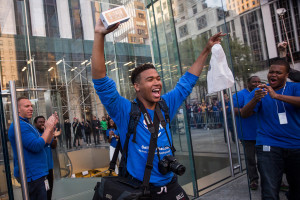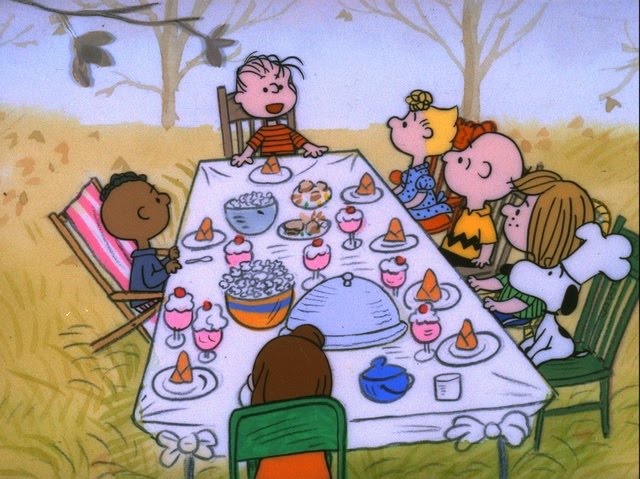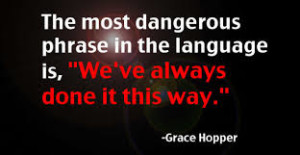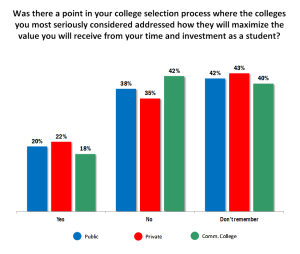This Friday thousands of people will line up at Apple stores worldwide to purchase the latest edition of the iPhone. And, even though the fervor surrounding this latest  product launch doesn’t match that of the first ever iPhone release, industry insiders are estimating this weekend’s sales will top 10 million-10 times more than the first weekend sales of the “original” iPhone.
product launch doesn’t match that of the first ever iPhone release, industry insiders are estimating this weekend’s sales will top 10 million-10 times more than the first weekend sales of the “original” iPhone.
Can we take a page from Apple’s playbook for greater success in higher ed enrollment? Yes. We believe there are two fundamental principles that we can adopt for greater enrollment success.
Think about the people who stood in line to purchase the original iPhone. Most of them already owned a cell phone so it was a discretionary purchase. An expensive one at that since the new phone costed as much as 4 times the one they already owned. Most of them had done some research on the product and had likely formulated perfectly rational reasons why they needed this product.
But the act of pulling out their wallets or signing on the dotted line was motivated by their desire to have it.
They acted on emotion.
The facts, as they perceived them, simply supported their desire.
Lesson 1: Facts tell, Emotions sell
And therein lies a lesson for college admission counselors. In fact, in our recent co-sponsored study on the college selection process, we found that a student’s excitement about attending a particular college outweighed other key factors, such as cost and perceived quality of the institution, by a ratio of 2-1.
When prospective students are searching for a college and talking to admission counselors they ask a lot of questions. They need information. They need to know about programs, costs, opportunities and time frames. They need facts.
The facts, however, won’t generate excitement.
The attraction to the school will come from elsewhere. It may come from a sense of community that they felt on a campus visit. Or it may come from an encounter they had with a professor or another student. Or it may come from an affinity they developed with your college when their brother or sister attended.
Ultimately, the student will have an emotional attachment to your college that transcends anything factual. That’s why it’s so important that we appeal to prospective students on an emotional level in addition to providing the necessary factual information.
They need more than facts and information from us. As counselors we need to show them what their lives are going to be like as students on our campus and in our community. When we talk to a prospective student, our job is to spark their excitement – to engage their emotional commitment to our college.
Lesson 2: Strong Bonds = Greater Success
Excitement alone may have driven the frenzy surrounding the first iPhone release, but it is the bond that the company has built with its customers that have made it possible to increase sales tenfold.
You know that a student’s college selection is tied closely to the strength of the relationship they build with your college over time. Building relationships is a complex, nuanced and powerful part of student recruitment. The key question is, “What can you do to influence relationship-building with your prospective students in all aspects of your recruitment efforts, from social media to personal contact. And, how can you involve all influencers, on or off campus, in the development of rich relationships with our prospective students?”
Your admissions officers work hard to spread the word about your institution during college fairs and at high schools. They lay out the facts and features. Your office most certainly conducts great campus open-houses at which enthused, friendly, and eager staffers speak positively about the great things your school can do for students. You most likely have a focused direct marketing and electronic recruitment strategy.
All of this activity is good and necessary, but how do you know which, or if any of these activities are truly generating that moment of excitement, that emotional bond that makes students want to show up on campus day one?
 You can join a prestigious group of colleges and universities that are exploring the issue of building relationships with prospective students. Call us or click here for information about of our new co-sponsored study, “The Relationship Dynamic: How prospective students form a relationship with your college, and why it matters in your ability to grow and control enrollment.”
You can join a prestigious group of colleges and universities that are exploring the issue of building relationships with prospective students. Call us or click here for information about of our new co-sponsored study, “The Relationship Dynamic: How prospective students form a relationship with your college, and why it matters in your ability to grow and control enrollment.”
This we know: When we effectively develop a relationship with students and create excitement about our college, we become something they just have to have. We are then able to give them what they need and, more importantly, give them what they want.
 Karen Full is a highly-respected higher education professional who has held positions in admissions and enrollment management at several institutions in the Midwest and Florida. With her vast experience working with large and small, public and private colleges, Karen brings a valuable perspective to her role as an Enrollment Strategist at Longmire and Company. Call Karen at 913/492.1265 x.711 or email her at kfull@longmire-co.com. Follow Karen on Twitter @KarenAFull.
Karen Full is a highly-respected higher education professional who has held positions in admissions and enrollment management at several institutions in the Midwest and Florida. With her vast experience working with large and small, public and private colleges, Karen brings a valuable perspective to her role as an Enrollment Strategist at Longmire and Company. Call Karen at 913/492.1265 x.711 or email her at kfull@longmire-co.com. Follow Karen on Twitter @KarenAFull.
 Bob Longmire is President of Longmire and Company, Inc. He is a recognized expert on the topic of how prospective students and parents form their college selection decisions – and how colleges can use that knowledge to grow and control their enrollment. He can be reached at (913) 492-1265, ext 709 or at blongmire@longmire-co.com. Connect with Bob at Linkedin/in/boblongmire.
Bob Longmire is President of Longmire and Company, Inc. He is a recognized expert on the topic of how prospective students and parents form their college selection decisions – and how colleges can use that knowledge to grow and control their enrollment. He can be reached at (913) 492-1265, ext 709 or at blongmire@longmire-co.com. Connect with Bob at Linkedin/in/boblongmire.











